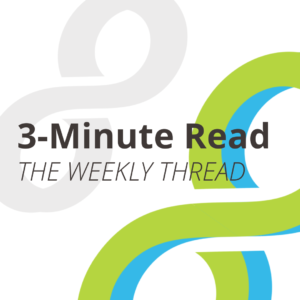Who Pays for Research? Global R&D Funding by the Numbers
Dec. 19, 2023 —As the year draws to a close, it’s a fitting time to reflect on the progress, challenges, and opportunities that have shaped the R&D funding landscape both in the United States and around the world. From the release of the United States 2022 HERD survey to R&D expenditure data from the UK, EU, and Japan, understanding and comparing R&D expenditures and funding data from around the world can help to identify trends and potential directions for the year ahead.
—As the year draws to a close, it’s a fitting time to reflect on the progress, challenges, and opportunities that have shaped the R&D funding landscape both in the United States and around the world. From the release of the United States 2022 HERD survey to R&D expenditure data from the UK, EU, and Japan, understanding and comparing R&D expenditures and funding data from around the world can help to identify trends and potential directions for the year ahead.
U.S. data
The U.S. National Science Foundation Higher Education Research and Development (HERD) survey is an annual census of U.S. universities’ R&D expenditures by field and source. This year’s survey, released in November 2023, focuses on data from 2022, in which R&D expenditures increased at U.S. universities by $8 billion—more than double 2021’s increase of $3.4 billion—to reach a total of $97.8 billion, with university R&D funded by businesses increasing by over $580 million. According to the National Patterns of R&D Resources by NSF, the total R&D performed in the United States in 2021 totals an estimated $791.9 billion. Year-over-year increases in U.S. R&D expenditures average around $17 billion, but recent years’ increases have been more significant, as the three years leading up to 2020 saw increases of $50.6 billion, $61.8 billion, and $50.8 billion. For more information on U.S. R&D expenditure data, read the October 3-Minute Read on corporate R&D investment.
The Science Philanthropy Alliance recently published its Science Philanthropy Indicators Report, which examines some of the NSF expenditure data through a philanthropic lens. The report highlights how philanthropic R&D funding is a significant and increasing source of support for basic research; higher education and non-profit support increased by approximately 40% for basic and 100% for applied research from 2006 to 2021. The report also examines the spread of nonprofit funds by focus area, with 72% of overall nonprofit support going toward biomedical and health science research. For more on philanthropic impact on the research landscape, see the 3-Minute Read on private foundation funding.
Global insights
The United States spends more than any other country on academic R&D. According to data from OECD, the top five countries for academic R&D funding in 2021 were the United States, China, Germany, the UK, and Japan. In overall R&D expenditures, the United States and China together account for half of all global R&D, followed by Japan, Germany, and South Korea.
In 2022, the EU spent £354 billion on R&D–an increase of 7% over 2021—according to data from Eurostat, the statistical office of the European Union. Over half of the total R&D expenditure in the EU was funded by businesses, with another third funded by the government. According to a research briefing from the UK Parliament House of Commons Library, the business sector funded £38.7 billion of R&D in the UK in 2021, roughly 59% of the total £66.2 billion. The public sector, including the government, funded around 19% at £12.8 billion. The Digest of Japanese Science and Technology Indicators 2023, from the National Institute of Science and Technology Policy, reported that Japan spent ¥500 million (approximately $3.5 million) more in 2022 than in 2021 on R&D, retaining its third-place ranking in worldwide R&D expenditures.
Why it matters
Increased funding can help accelerate the pace of scientific advancements and cultivate a more research-driven environment in which cross-sector partnerships can flourish. These partnerships are essential for the diverse perspectives, skills, and expertise needed to tackle grand-scale challenges and can help drive societal and economic progress. Globally, R&D expenditures are the fuel for innovation and economic competitiveness. For the biggest global government funders, national priorities set the direction, from semiconductors to the biosciences. Recent budgets include pandemic-incentivized priorities, but if the growth trend holds, 2024 will reach new heights for R&D funding and provide expanding opportunities to partner to foster global innovation and growth.
We want to hear from you. Will your organization’s research funding levels rise or fall in 2024? Let us know on our LinkedIn profile.
The 3-Minute Read is a UIDP member information piece and does not represent the opinions of our members or representatives. We welcome your comments on our LinkedIn profile.
Editor’s note: Look for the next UIDP 3-Minute Read after the new year.


